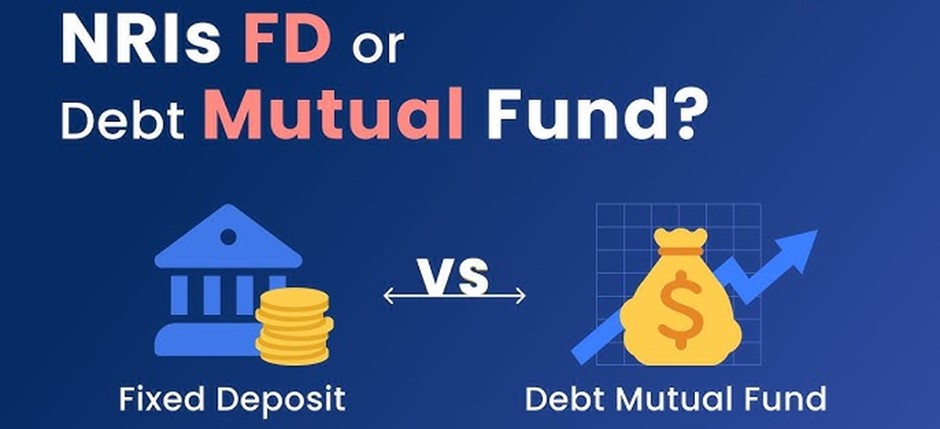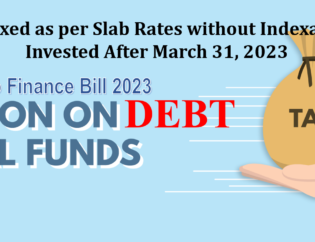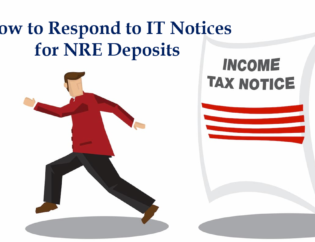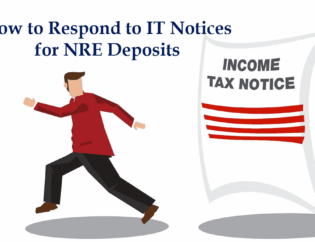
NRE Bank FDs have always been considered the best investment product for NRIs to earn TAX-FREE return in India. However, with change in global compliance and reporting requirements and higher currency risk of rupee (INR) depreciation, it may not be that clear any more.
A lot of NRIs and advisors do not recommend mutual funds over NRE FD to NRIs, especially for US residents, due to complicated PFIC reporting and payment of tax on notional income. However, for NRIs from developed countries that taxes foreign income, liquid or debt mutual funds may turn out to be a better investment on after-tax basis. Let’s understand with an example.
Example:
A US Resident has Rs. 10,000,000 on December 31, 2019 that he wants to invest for 5 years to generate higher after-tax return in India with low risk.
The interest on NRE FD and the return on debt mutual fund is assumed to be same at 7% and marginal tax rate in USA is assumed to be 35%.
Investing in NRE FD
As the investor is a US resident, the interest on NRE deposit would be taxable for him in USA and he would need to pay tax on the interest income as shown in the table below:
| Year | Bank FD Balance | Interest @ 7% | Year | USD/INR | Interest ($) |
| 31-12-2019 | 1,00,00,000 | 0 | 2019 | 71.000 | $ 0 |
| 31-12-2020 | 1,07,00,000 | 7,00,000 | 2020 | 73.034 | $ 9,585 |
| 31-12-2021 | 1,14,49,000 | 7,49,000 | 2021 | 74.343 | $ 10,075 |
| 31-12-2022 | 1,22,50,430 | 8,01,430 | 2022 | 82.599 | $ 9,703 |
| 31-12-2023 | 1,31,07,960 | 8,57,530 | 2023 | 83.162 | $ 10,312 |
| 31-12-2024 | 1,40,25,517 | 9,17,557 | 2024 | 85.577 | $ 10,722 |
| Total Interest | 40,25,517 | $ 50,396 | |||
| Total Tax @ 35% | $ 17,639 | ||||
Investing in Debt Mutual Fund
If Rs. 1 cr. was invested in a debt mutual fund (liquid/money market / other debt fund) generating 7% return, the income and tax for US based on MTM gain/loss would be as follows:
| Value | USD/INR | Year | Value in USD | Gain (MTM) | Tax (USD) |
| 1,00,00,000 | 71.000 | 2019 | $ 1,40,845 | $ 0 | $ 0 |
| 1,07,00,000 | 73.034 | 2020 | $ 1,46,507 | $ 5,662 | $ 1,982 |
| 1,14,49,000 | 74.343 | 2021 | $ 1,54,002 | $ 7,495 | $ 2,623 |
| 1,22,50,430 | 82.599 | 2022 | $ 1,48,312 | $ -5,690 | $ -1,992 |
| 1,31,07,960 | 83.162 | 2023 | $ 1,57,620 | $ 9,308 | $ 3,258 |
| 1,40,25,517 | 85.577 | 2024 | $ 1,63,894 | $ 6,274 | $ 2,196 |
| Total | $ 23,049 | $ 8,067 |
So, by investing in debt mutual fund, the tax can be significantly reduced from $17,639 to $8,067 in the USA. Yes, the investor would have to pay tax in India, however, the effective tax rate in India would not be 35% and the tax paid in India can be claimed in USA as foreign tax credit.
Reporting of unrealized gain on mutual fund is unique only in USA. However, for residents of other country that taxes global income, tax is paid on redemption i.e. in 2024 on total gain only.
The tax saving is because of the benefit of INR Depreciation. In case of NRE FD, only interest income in INR is converted into foreign currency, whereas in case of mutual fund, the capital gain is calculated in foreign currency getting benefit of INR depreciation on interest amount as well as on the principal amount (investment cost).
Recommendations:
- If you are an NRI from tax-heaven countries where you do not have to pay tax on your foreign interest income, e.g. Dubai, Kuwait, Qatar, Singapore, etc., NRE FD is THE best investment option to generate secured tax free return in India.
- If you are an NRI from a country that taxes foreign income (e.g. USA, UK, Australia, etc.) and if you believe that the INR will depreciate against your local currency in future, NRE FD may not be the right investment for you. You would be better off investing in debt mutual funds in India.









